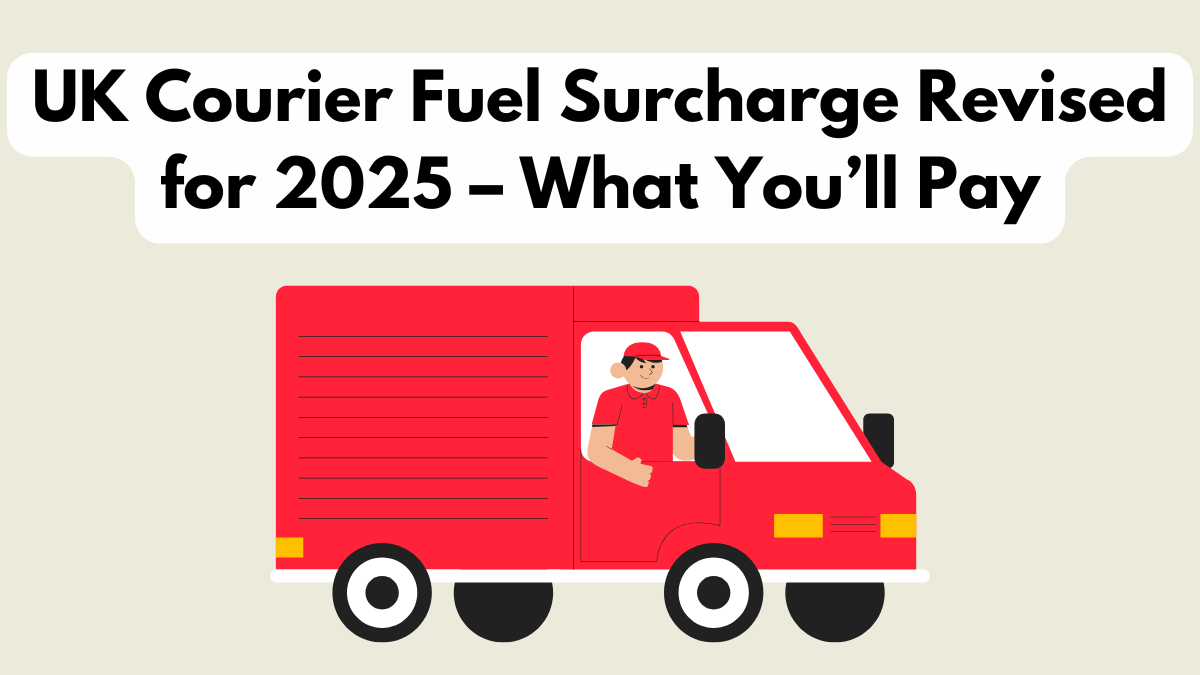As fuel prices continue to fluctuate across Europe, major delivery companies have announced significant changes to the UK Courier Fuel Surcharge system in their latest 2025 update. These revisions aim to align courier charges with market fuel rates, ensure transparency, and balance operational costs for both the company and the customer.
This new model introduces dynamic pricing based on fuel cost brackets, which will directly affect how much consumers and businesses pay for domestic and international parcel deliveries. Whether you’re a frequent online shopper or a small business reliant on daily courier services, this 2025 update will likely affect your monthly shipping expenses.
Understanding the new structure is essential if you want to manage your delivery budgets effectively. Here’s everything you need to know about the revised UK Courier Fuel Surcharge framework for 2025.

What Is a Fuel Surcharge and Why Is It Applied?
A fuel surcharge is an additional fee applied to cover fuel costs incurred during parcel transportation. In the logistics sector, fuel accounts for a large portion of operational expenses, especially for cross-country and last-mile deliveries. Courier companies implement fuel surcharges to:
-
Offset unpredictable fluctuations in fuel prices
-
Maintain profit margins without increasing base shipping rates
-
Keep services sustainable for long-distance and rural deliveries
-
Adjust customer pricing fairly and transparently
With global fuel markets remaining volatile, the UK Courier Fuel Surcharge ensures that the logistics ecosystem adapts dynamically without compromising service quality.
Key Highlights of the 2025 Update
The 2025 update brings several important changes to how fuel surcharges are calculated and displayed. Companies like DPD, Evri, and Royal Mail are implementing new slab-based charges linked to official fuel indices, such as the UK Department for Business & Trade fuel price tracker.
Major updates include:
-
Slab-based charges tied to weekly fuel price bands
-
Separate fuel surcharge rates for domestic and international deliveries
-
Transparent weekly update mechanism on courier company websites
-
Introduction of eco-incentives for businesses using green delivery options
-
Variable rates depending on parcel weight and size
This revision is expected to bring greater predictability and fairness to the entire UK Courier Fuel Surcharge system.
New Fuel Surcharge Slabs – Explained
Below is a simplified version of the new fuel surcharge slabs introduced under the 2025 update:
| Average Fuel Price (Per Litre) | Fuel Surcharge (%) | Applicable Services |
|---|---|---|
| £1.20 – £1.29 | 7% | Domestic & Standard |
| £1.30 – £1.39 | 9% | Domestic & Express |
| £1.40 – £1.49 | 11% | Domestic & International |
| £1.50 – £1.59 | 13% | All Courier Services |
| Above £1.60 | 15% | All Courier Services |
The surcharge is calculated on the base delivery rate before VAT. This means that the higher the fuel price, the greater the additional cost on your shipment.
How This Affects Customers and Businesses
With the implementation of the new UK Courier Fuel Surcharge, both individual and commercial customers will experience slight changes in delivery pricing. Here’s a breakdown of the expected impact:
-
E-commerce sellers: Increased shipping costs may lead to price adjustments for customers
-
Subscription services: Monthly delivery charges may see minor hikes
-
Retail chains: Bulk shipping and cross-region delivery will now require re-budgeting
-
Casual senders: Occasional users might pay 5–15% more per parcel based on fuel rates
-
B2B logistics users: Need to update invoicing and contracts to reflect surcharge changes
To reduce costs, many businesses are considering long-term courier partnerships, carbon-efficient delivery options, and customer price-sharing strategies.
Conclusion
The revised UK Courier Fuel Surcharge under the 2025 update represents a more adaptive, transparent approach to managing delivery costs amid fuel volatility. While it does introduce moderate price increases, it also ensures sustainability and fairness for all stakeholders in the logistics chain. Keeping an eye on weekly fuel trends and updating your delivery strategy accordingly will be key to staying ahead.
Frequently Asked Questions
What is the new UK Courier Fuel Surcharge system for 2025?
The 2025 update introduces a slab-based surcharge model tied to weekly fuel price averages. Rates vary based on parcel type, service, and fuel bracket.
How often will the fuel surcharge be updated?
Courier companies will revise the surcharge weekly based on fuel price indices published by government agencies.
Will this surcharge affect international shipments?
Yes, international shipments are also impacted. Higher fuel prices lead to increased fuel surcharges on cross-border deliveries.
Are there any exemptions from the fuel surcharge?
Currently, all standard and express services include the fuel surcharge. Some eco-delivery programs offer rebates or reduced rates.
How can customers reduce the impact of this surcharge?
Bulk shipping, choosing off-peak delivery, or partnering with couriers that offer green delivery incentives can help offset fuel surcharge costs.
Click here to learn more